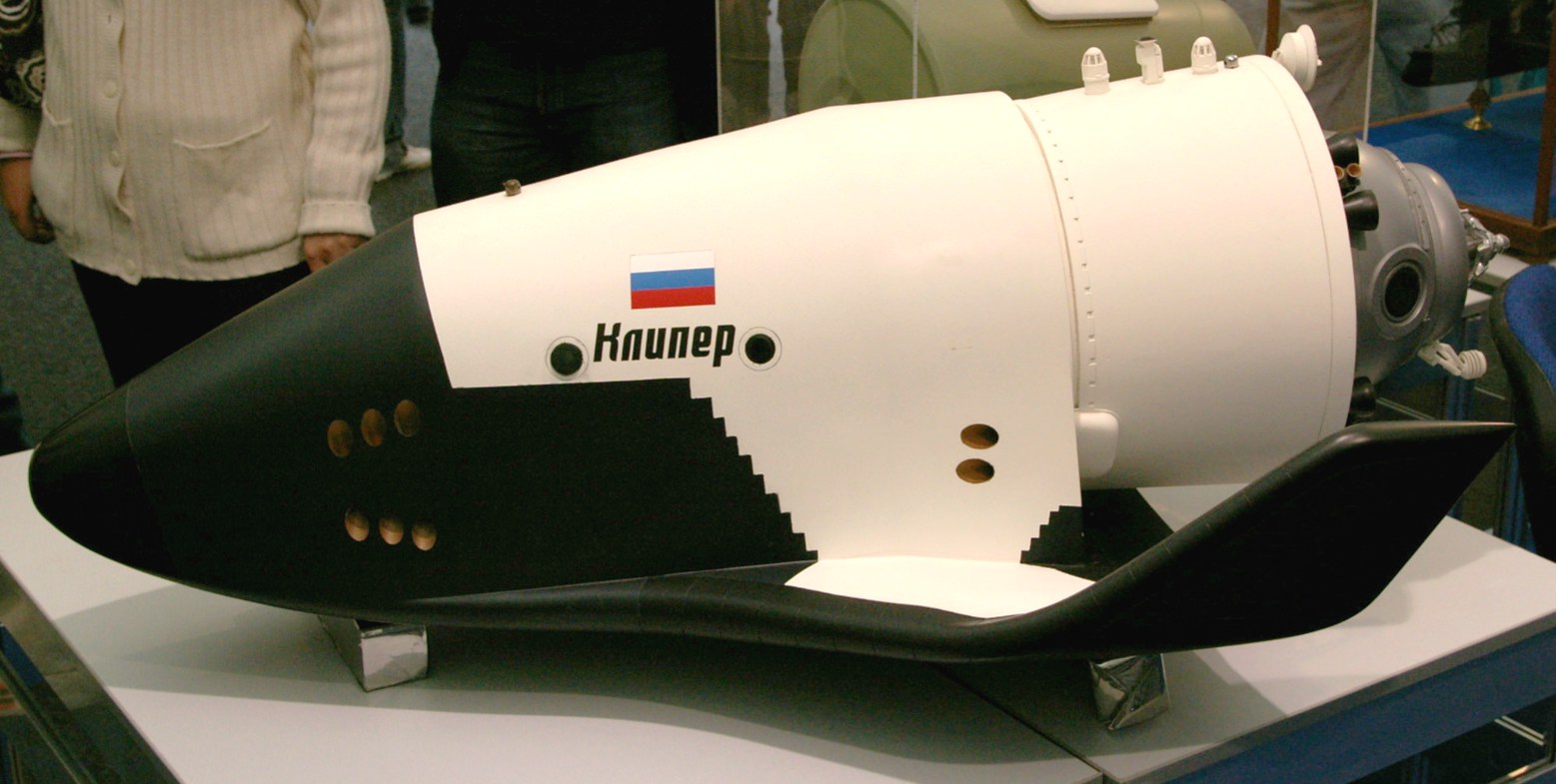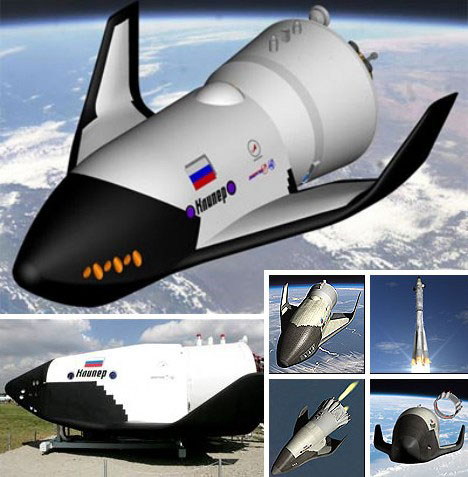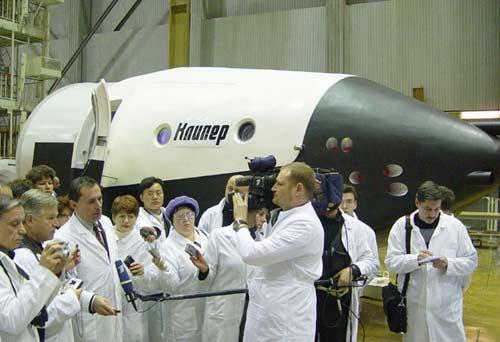jakojako777
Senior Member
- Joined
- Oct 27, 2009
- Messages
- 2,957
- Likes
- 40
Russia to start research into spacecraft nuclear engines in 2010
Russia will launch research into nuclear engines for spaceships from 2010, the head of the Federal Space Agency said on Sunday.
"Nuclear engines for spaceships are a very promising area. Such engines should be created to make flights to Mars and other planets, for example," Anatoly Perminov said.
Perminov earlier said that the development of Megawatt-class nuclear space power systems (MCNSPS) for manned spacecraft was crucial for Russia if the country wanted to maintain a competitive edge in the space race, including the exploration of the Moon and Mars.
Perminov said that the draft design of spacecraft powered by a nuclear engine would be finalized by 2012, and the financing for further development in the next nine years would require an investment of at least 17 billion rubles (over $580 million).
Anatoly Koroteyev, president of the Russian Academy of Cosmonautics and head of the Keldysh research center, earlier said that the key scientific and technical problem in sending manned missions to the Moon and Mars was the development of new propulsion systems and energy supplies with a high degree of energy-mass efficiency.
The current capabilities of the Russian space industry are clearly insufficient either to set up a permanent base on the Moon or accomplish an independent manned mission to Mars, he said.
BAIKONUR SPACE CENTER (Kazakhstan), December 20 (RIA Novosti)
Russia to start research into spacecraft nuclear engines in 2010 | Top Russian news and analysis online | 'RIA Novosti' newswire
Russia, Europe abandon joint space project - Roscosmos
MOSCOW, January 29 (RIA Novosti) - Russia and Europe will not continue the joint development of a new reusable manned spacecraft, an official from Russia's space agency (Roscosmos) said on Thursday.
The Federal Space Program for 2006-2015 stipulated the joint construction with European countries of a reusable "Clipper" spacecraft to service the International Space Station (ISS) and make journeys to the Moon.
"We planned to build a reusable manned spacecraft in cooperation with the European Space Agency [ESA], but our approaches to this project turned out to be very different," Alexei Krasnov, director of manned flight programs at Roscosmos, told a roundtable meeting in Moscow.
The official said Russia would launch a second tender for a new shuttle spacecraft because the first attempt had proved unsatisfactory. New design projects will be considered through 2010.
"The participants of a new tender may include the previous bidders - the Energia Rocket and Space Corporation, the Khrunichev State Research and Production Center and the Molniya Research and Production Association," Krasnov said.
He also said Russia was planning to build the project's first manned spacecraft by 2015-2018, along with a new carrier rocket with a payload capacity of at least 23 tons.
Various sources estimate the cost of the Russian reusable spacecraft project, including construction, will total $1-3 billion.
The launches of the future carrier rockets will be conducted from a new space center, Vostochny, in Russia's Far East, Krasnov said.
Russia currently uses two launch sites for space carrier rockets and ballistic missiles tests: the Baikonur space center in the Central Asian Republic of Kazakhstan, which it has leased since the collapse of the Soviet Union, and the Plesetsk space center in northwest Russia.
Russia, Europe abandon joint space project - Roscosmos | Top Russian news and analysis online | 'RIA Novosti' newswire


Kliper (Clipper) spacecraft
Designing the Soyuz replacement: 2000-2005
Since 1970s, Russian engineers pondered over possible configurations of a new spacecraft, which could replace the venerable but relatively small Soyuz. Before the collapse of the USSR, RKK Energia -- the developer of the Soyuz -- attempted to tackle the issue several times, however technical and financial problems kept all these efforts from coming to fruition. However, as soon as the Russian economy started emerging from the post-Soviet transition, developers renewed their search for the Soyuz replacement.
The 2006 configuration of the winged orbiter
By January 2006, when the Russian government launched a tender for the development of the next generation spacecraft to replace Soyuz, RKK Energia conceptualized a new configuration of the Kliper spacecraft. Along with the improved aerodynamic shape, RKK Energia returned to the use of the expendable habitation and propulsion module, since the federal tender required a single spacecraft design, rather than a "system."
Competitors: Alternative designs for the Kliper
According to the Russian law, federal funding for the development of the Kliper spacecraft could not be provided before the official tender of for the project had taken place. Although many considered the tender a formality and RKK Energia's design as the favorite, Khrunichev enterprise in Moscow submitted its proposals for the follow-on to the TKS spacecraft and NPO Molniya pushed the modified design of the MAKS mini-shuttle, it proposed in the 1990s. The closed tender was officially held from January 18 to July 19, 2006.
Into deep space
Early on in the program, RKK Energia advertised the Kliper, as a multifunctional vehicle, potentially capable of supporting missions into deep space. Develolpers proposed modifications of the spacecraft, which could play role in lunar exploration and even serve as a return vehicle in the expeditions to Mars.
International cooperation
Practically on a day the existence of the Kliper project was revealed to the public, Russian officials admitted that despite its pragmatic and cost-conscious design, the new orbiter had little chance getting off the ground without financial backing from abroad. No surprisingly, the Russian Space Agency, Roskosmos, and RKK Energia launched an aggressive marketing effort to sell the Kliper to international partners. However, they had little room to shop around.
TECHNICAL DESCRIPTION
Fuselage
The Kliper sported a reusable aerodynamically active fuselage, protected by special tiles, not unlike those on the US Space Shuttle and the Soviet Buran. The original design of the Kliper included so-called "lifting body," a wingless iron-shaped fuselage, which would enable the craft to maneuver in the Earth atmosphere during the reentry. However, by the end of 2004, engineers favored a winged body, which would increase the maneuverability of the vehicle, while reducing g-loads on the crew.
Cabin module
The main habitable volume onboard the Kliper would be contained inside a cone-shaped cabin structure. The lower half of the cabin would be enclosed within the main fuselage, while the top half would be covered with special protective shield. The cabin carried all avionics, flight control, and life-support systems.
Propulsion and habitation module
The original design of the Kliper spacecraft included a special detachable habitation and service module mounted behind the reentry glider. In its turn, the module would consist of two structural sections: a habitation module, closely resembling the one on the Soyuz spacecraft and the doughnut-shaped service module. The habitation module would contain docking port, toilet and other life-support systems. The In 2005, most functions of the habitation and propulsion module were transferred to a separately launched Parom space tug.
Launch vehicle
According to the original plans, the Kliper would be launched on top of a yet-to-be developed Onega booster -- a heavily modified Soyuz rocket. Given virtually nonexistent chances of obtaining funding for the Onega, RKK Energia considered the operational Zenit booster with similar capabilities, as well as yet-to-be built Angara-3 rocket. The Soyuz-3 rocket was also considered as the alternative. However, upon "spliting" the spacecraft into two independent vehicles in 2005, RKK Energia settled on the smaller Soyuz-2-3 launcher. However alternative options still remained on the table as of beginning of 2006.
Parom orbital tug
During 2005, RKK Energia embarked on another major revision of the Kliper. It would be the third significant re-shaping of the spacecraft configuration, since it was first unveiled to the public in February 2004. The latest design included not one but two vehicles: the Kliper reentry glider itself and the Parom (ferry) orbital tug -- a new element of the system, which would be launched by a separate rocket.
FLIGHT PROFILES
Nominal flight profile in Earth orbit
In its latest configuration, the Kliper would be launched on top of the three-stage Soyuz-2-3 rocket and upon reaching the orbit would wait for the arrival of the Parom orbital tug, which would boost the vehicle to the space station. The Parom would use its free port on the "tail" side of the vehicle to dock with the space station. After undocking, the Parom would remain in orbit for the next mission, while the Kliper would reenter and land on the runway as a glider.
Emergency escape profiles
In the original concept, the Kliper would be topped with the emergency escape rocket, which would pull the glider away from the failing booster during the launch, as it was done onboard the Soyuz spacecraft. However in the effort to save weight and simplify aerodynamic flow around the nose of the orbiter, engineers decided to move the escape rockets to the launch vehicle adapter on the tail of the spacecraft, where they could double as the orbital maneuvering system.


Russia will launch research into nuclear engines for spaceships from 2010, the head of the Federal Space Agency said on Sunday.
"Nuclear engines for spaceships are a very promising area. Such engines should be created to make flights to Mars and other planets, for example," Anatoly Perminov said.
Perminov earlier said that the development of Megawatt-class nuclear space power systems (MCNSPS) for manned spacecraft was crucial for Russia if the country wanted to maintain a competitive edge in the space race, including the exploration of the Moon and Mars.
Perminov said that the draft design of spacecraft powered by a nuclear engine would be finalized by 2012, and the financing for further development in the next nine years would require an investment of at least 17 billion rubles (over $580 million).
Anatoly Koroteyev, president of the Russian Academy of Cosmonautics and head of the Keldysh research center, earlier said that the key scientific and technical problem in sending manned missions to the Moon and Mars was the development of new propulsion systems and energy supplies with a high degree of energy-mass efficiency.
The current capabilities of the Russian space industry are clearly insufficient either to set up a permanent base on the Moon or accomplish an independent manned mission to Mars, he said.
BAIKONUR SPACE CENTER (Kazakhstan), December 20 (RIA Novosti)
Russia to start research into spacecraft nuclear engines in 2010 | Top Russian news and analysis online | 'RIA Novosti' newswire
Russia, Europe abandon joint space project - Roscosmos
MOSCOW, January 29 (RIA Novosti) - Russia and Europe will not continue the joint development of a new reusable manned spacecraft, an official from Russia's space agency (Roscosmos) said on Thursday.
The Federal Space Program for 2006-2015 stipulated the joint construction with European countries of a reusable "Clipper" spacecraft to service the International Space Station (ISS) and make journeys to the Moon.
"We planned to build a reusable manned spacecraft in cooperation with the European Space Agency [ESA], but our approaches to this project turned out to be very different," Alexei Krasnov, director of manned flight programs at Roscosmos, told a roundtable meeting in Moscow.
The official said Russia would launch a second tender for a new shuttle spacecraft because the first attempt had proved unsatisfactory. New design projects will be considered through 2010.
"The participants of a new tender may include the previous bidders - the Energia Rocket and Space Corporation, the Khrunichev State Research and Production Center and the Molniya Research and Production Association," Krasnov said.
He also said Russia was planning to build the project's first manned spacecraft by 2015-2018, along with a new carrier rocket with a payload capacity of at least 23 tons.
Various sources estimate the cost of the Russian reusable spacecraft project, including construction, will total $1-3 billion.
The launches of the future carrier rockets will be conducted from a new space center, Vostochny, in Russia's Far East, Krasnov said.
Russia currently uses two launch sites for space carrier rockets and ballistic missiles tests: the Baikonur space center in the Central Asian Republic of Kazakhstan, which it has leased since the collapse of the Soviet Union, and the Plesetsk space center in northwest Russia.
Russia, Europe abandon joint space project - Roscosmos | Top Russian news and analysis online | 'RIA Novosti' newswire


Kliper (Clipper) spacecraft
Designing the Soyuz replacement: 2000-2005
Since 1970s, Russian engineers pondered over possible configurations of a new spacecraft, which could replace the venerable but relatively small Soyuz. Before the collapse of the USSR, RKK Energia -- the developer of the Soyuz -- attempted to tackle the issue several times, however technical and financial problems kept all these efforts from coming to fruition. However, as soon as the Russian economy started emerging from the post-Soviet transition, developers renewed their search for the Soyuz replacement.
The 2006 configuration of the winged orbiter
By January 2006, when the Russian government launched a tender for the development of the next generation spacecraft to replace Soyuz, RKK Energia conceptualized a new configuration of the Kliper spacecraft. Along with the improved aerodynamic shape, RKK Energia returned to the use of the expendable habitation and propulsion module, since the federal tender required a single spacecraft design, rather than a "system."
Competitors: Alternative designs for the Kliper
According to the Russian law, federal funding for the development of the Kliper spacecraft could not be provided before the official tender of for the project had taken place. Although many considered the tender a formality and RKK Energia's design as the favorite, Khrunichev enterprise in Moscow submitted its proposals for the follow-on to the TKS spacecraft and NPO Molniya pushed the modified design of the MAKS mini-shuttle, it proposed in the 1990s. The closed tender was officially held from January 18 to July 19, 2006.
Into deep space
Early on in the program, RKK Energia advertised the Kliper, as a multifunctional vehicle, potentially capable of supporting missions into deep space. Develolpers proposed modifications of the spacecraft, which could play role in lunar exploration and even serve as a return vehicle in the expeditions to Mars.
International cooperation
Practically on a day the existence of the Kliper project was revealed to the public, Russian officials admitted that despite its pragmatic and cost-conscious design, the new orbiter had little chance getting off the ground without financial backing from abroad. No surprisingly, the Russian Space Agency, Roskosmos, and RKK Energia launched an aggressive marketing effort to sell the Kliper to international partners. However, they had little room to shop around.
TECHNICAL DESCRIPTION
Fuselage
The Kliper sported a reusable aerodynamically active fuselage, protected by special tiles, not unlike those on the US Space Shuttle and the Soviet Buran. The original design of the Kliper included so-called "lifting body," a wingless iron-shaped fuselage, which would enable the craft to maneuver in the Earth atmosphere during the reentry. However, by the end of 2004, engineers favored a winged body, which would increase the maneuverability of the vehicle, while reducing g-loads on the crew.
Cabin module
The main habitable volume onboard the Kliper would be contained inside a cone-shaped cabin structure. The lower half of the cabin would be enclosed within the main fuselage, while the top half would be covered with special protective shield. The cabin carried all avionics, flight control, and life-support systems.
Propulsion and habitation module
The original design of the Kliper spacecraft included a special detachable habitation and service module mounted behind the reentry glider. In its turn, the module would consist of two structural sections: a habitation module, closely resembling the one on the Soyuz spacecraft and the doughnut-shaped service module. The habitation module would contain docking port, toilet and other life-support systems. The In 2005, most functions of the habitation and propulsion module were transferred to a separately launched Parom space tug.
Launch vehicle
According to the original plans, the Kliper would be launched on top of a yet-to-be developed Onega booster -- a heavily modified Soyuz rocket. Given virtually nonexistent chances of obtaining funding for the Onega, RKK Energia considered the operational Zenit booster with similar capabilities, as well as yet-to-be built Angara-3 rocket. The Soyuz-3 rocket was also considered as the alternative. However, upon "spliting" the spacecraft into two independent vehicles in 2005, RKK Energia settled on the smaller Soyuz-2-3 launcher. However alternative options still remained on the table as of beginning of 2006.
Parom orbital tug
During 2005, RKK Energia embarked on another major revision of the Kliper. It would be the third significant re-shaping of the spacecraft configuration, since it was first unveiled to the public in February 2004. The latest design included not one but two vehicles: the Kliper reentry glider itself and the Parom (ferry) orbital tug -- a new element of the system, which would be launched by a separate rocket.
FLIGHT PROFILES
Nominal flight profile in Earth orbit
In its latest configuration, the Kliper would be launched on top of the three-stage Soyuz-2-3 rocket and upon reaching the orbit would wait for the arrival of the Parom orbital tug, which would boost the vehicle to the space station. The Parom would use its free port on the "tail" side of the vehicle to dock with the space station. After undocking, the Parom would remain in orbit for the next mission, while the Kliper would reenter and land on the runway as a glider.
Emergency escape profiles
In the original concept, the Kliper would be topped with the emergency escape rocket, which would pull the glider away from the failing booster during the launch, as it was done onboard the Soyuz spacecraft. However in the effort to save weight and simplify aerodynamic flow around the nose of the orbiter, engineers decided to move the escape rockets to the launch vehicle adapter on the tail of the spacecraft, where they could double as the orbital maneuvering system.




